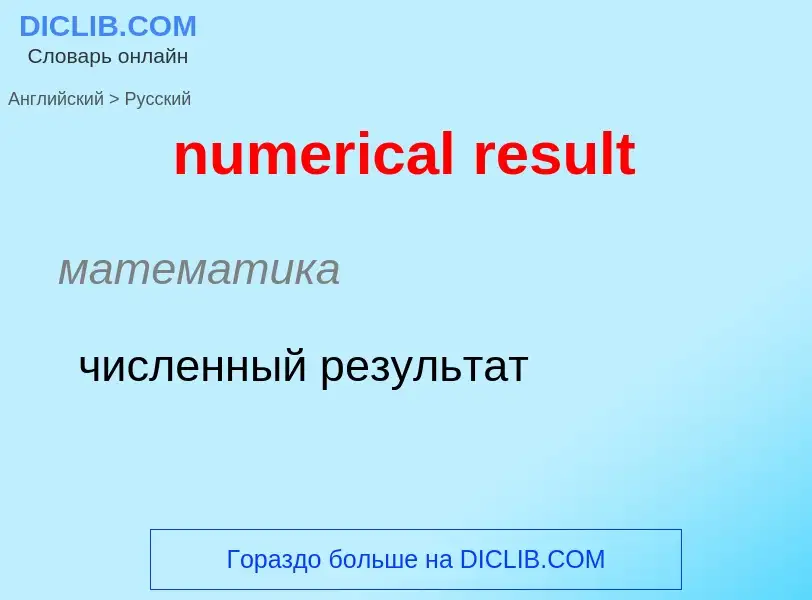Перевод и анализ слов искусственным интеллектом ChatGPT
На этой странице Вы можете получить подробный анализ слова или словосочетания, произведенный с помощью лучшей на сегодняшний день технологии искусственного интеллекта:
- как употребляется слово
- частота употребления
- используется оно чаще в устной или письменной речи
- варианты перевода слова
- примеры употребления (несколько фраз с переводом)
- этимология
numerical result - перевод на русский
математика
численный результат
2) проистекать, следовать
- assessed result
- collected results
- company-wide results
- experimental result
- inspection result
- iterative result
- numerical result
- sampling result
[ri'zʌlt]
общая лексика
результат
получать (получаться) в результате
вывод
итог
кончаться
получаться
порождение
приводить
проистекать
следовать
эффект
медицина
исход
существительное
[ri'zʌlt]
общая лексика
результат
исход
следствие
результат, исход
результат вычисления, итог
математика
итог
ответ
синоним
антоним
глагол
общая лексика
(from) следовать
происходить в результате (чего-л.)
проистекать
(in) кончаться (чем-л.)
иметь (своим) результатом (что-л.)
следовать, происходить в результате, проистекать
кончаться, иметь результатом
редкое выражение
переходить к прежнему собственнику
синоним
['ʌpʃɔt]
существительное
общая лексика
(the upshot)
развязка
результат
заключение
вывод
развязка, заключение
Википедия

Numerical analysis is the study of algorithms that use numerical approximation (as opposed to symbolic manipulations) for the problems of mathematical analysis (as distinguished from discrete mathematics). It is the study of numerical methods that attempt at finding approximate solutions of problems rather than the exact ones. Numerical analysis finds application in all fields of engineering and the physical sciences, and in the 21st century also the life and social sciences, medicine, business and even the arts. Current growth in computing power has enabled the use of more complex numerical analysis, providing detailed and realistic mathematical models in science and engineering. Examples of numerical analysis include: ordinary differential equations as found in celestial mechanics (predicting the motions of planets, stars and galaxies), numerical linear algebra in data analysis, and stochastic differential equations and Markov chains for simulating living cells in medicine and biology.
Before modern computers, numerical methods often relied on hand interpolation formulas, using data from large printed tables. Since the mid 20th century, computers calculate the required functions instead, but many of the same formulas continue to be used in software algorithms.
The numerical point of view goes back to the earliest mathematical writings. A tablet from the Yale Babylonian Collection (YBC 7289), gives a sexagesimal numerical approximation of the square root of 2, the length of the diagonal in a unit square.
Numerical analysis continues this long tradition: rather than giving exact symbolic answers translated into digits and applicable only to real-world measurements, approximate solutions within specified error bounds are used.


